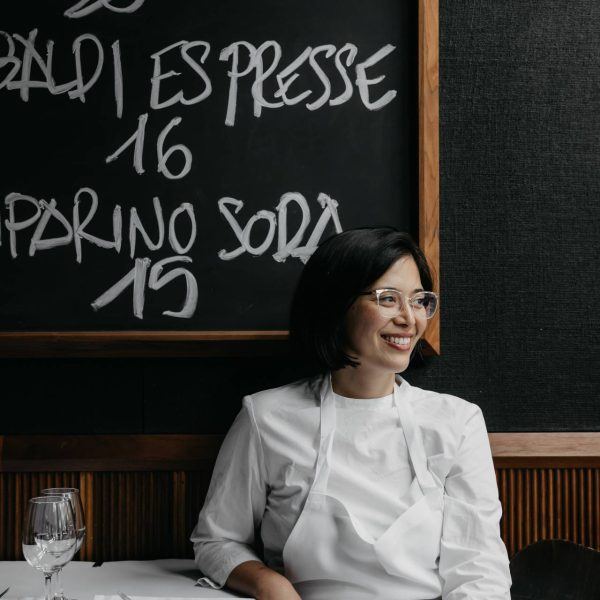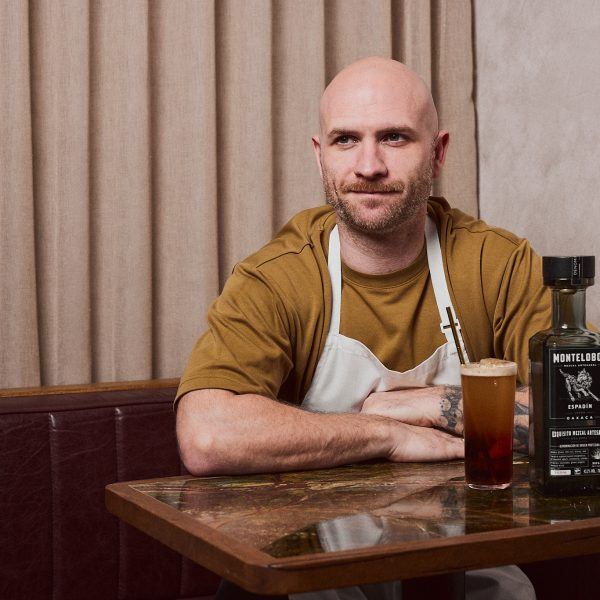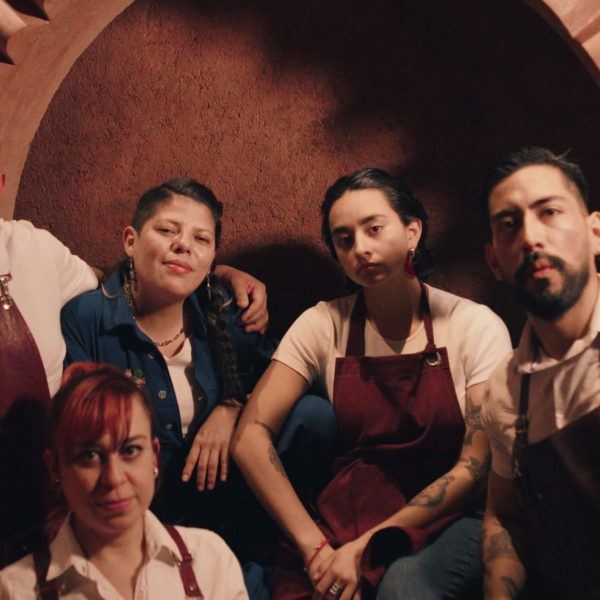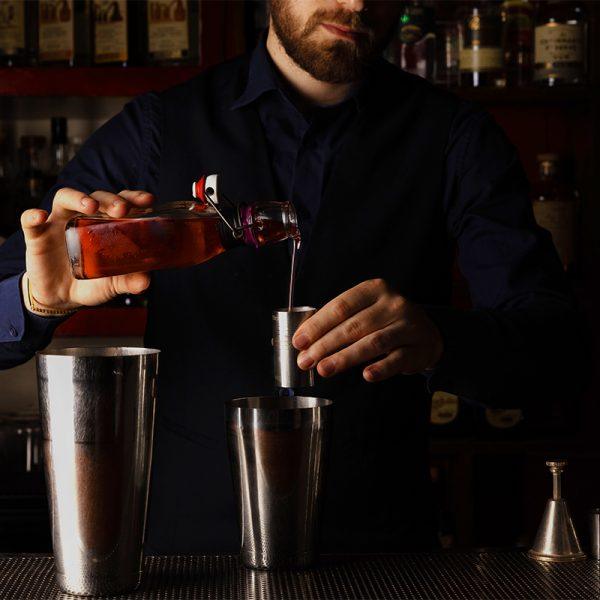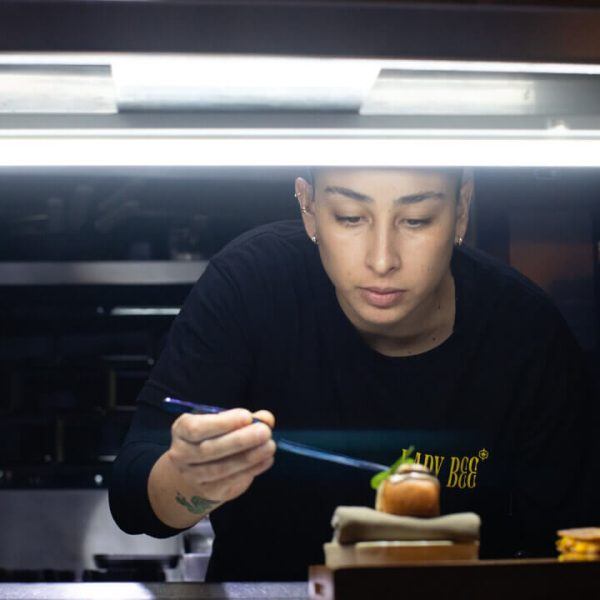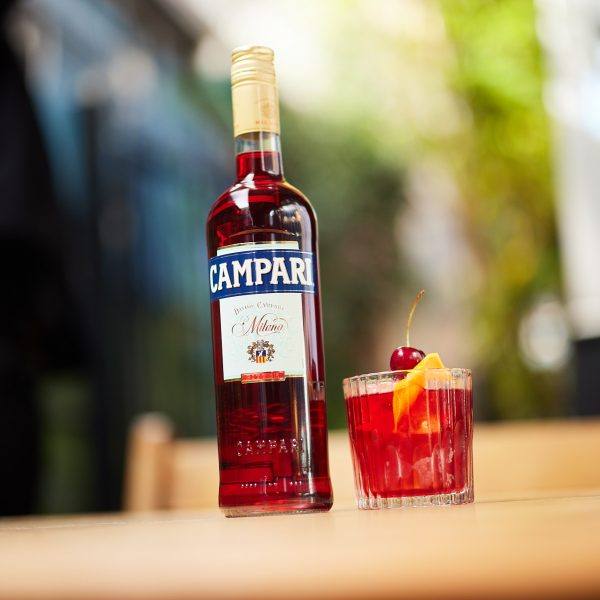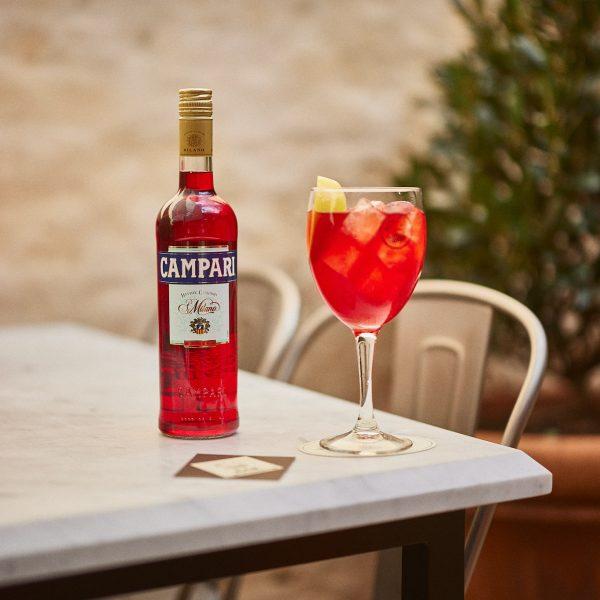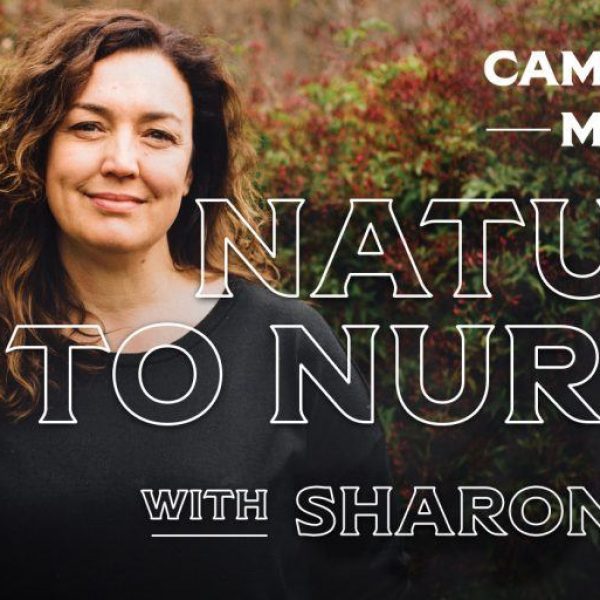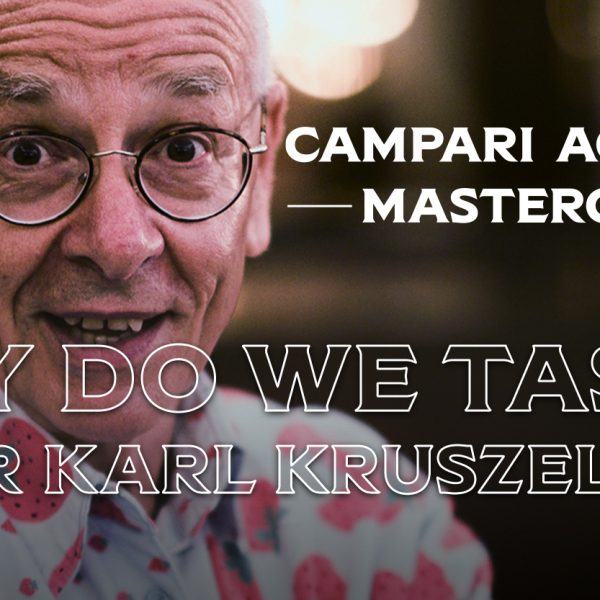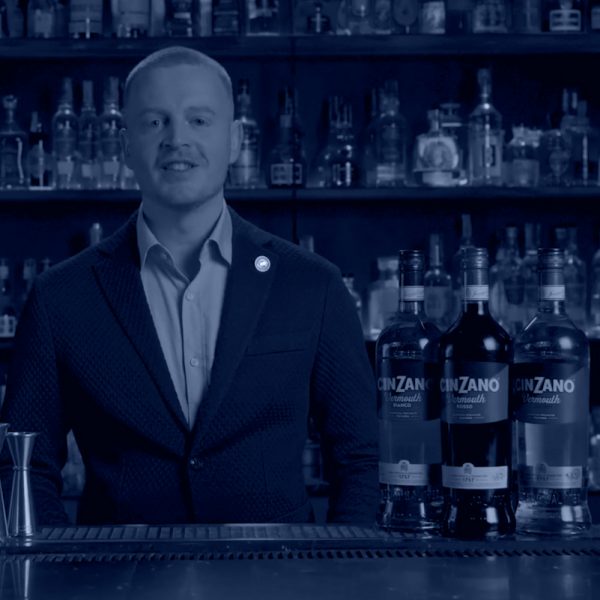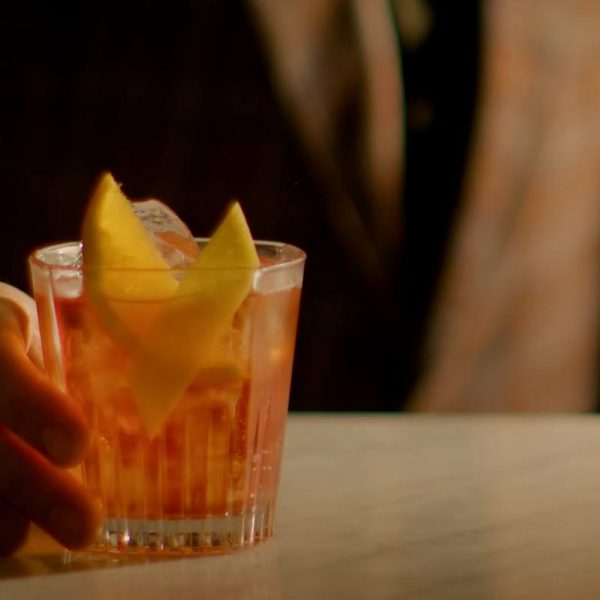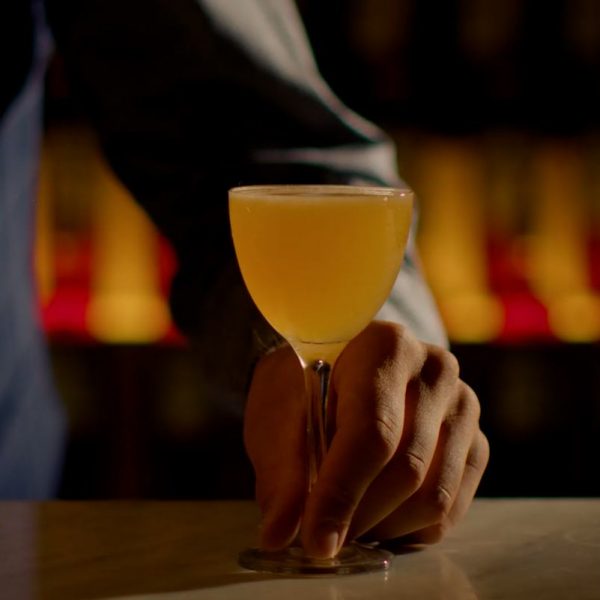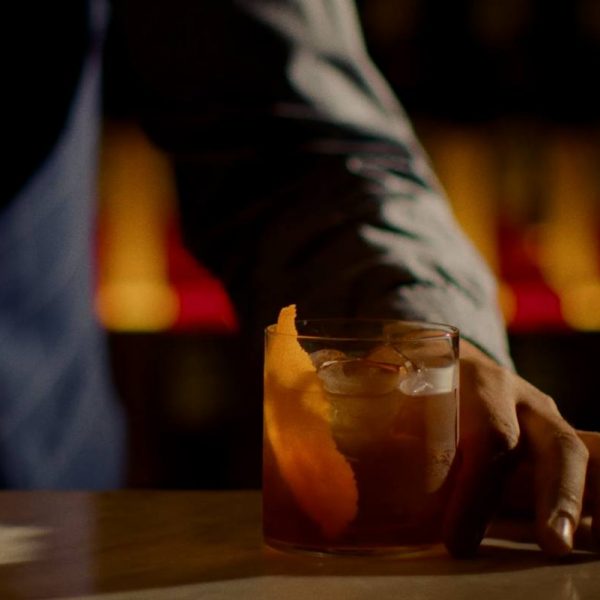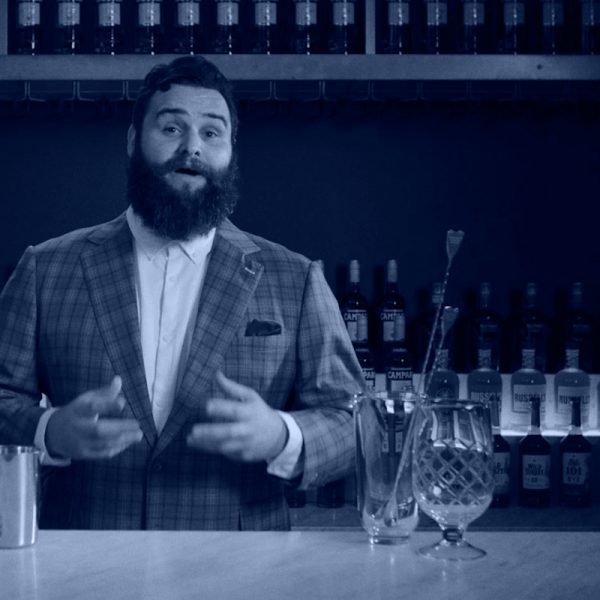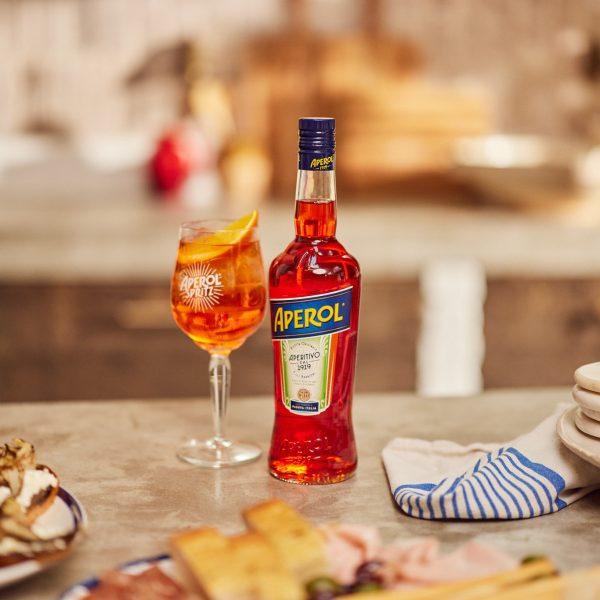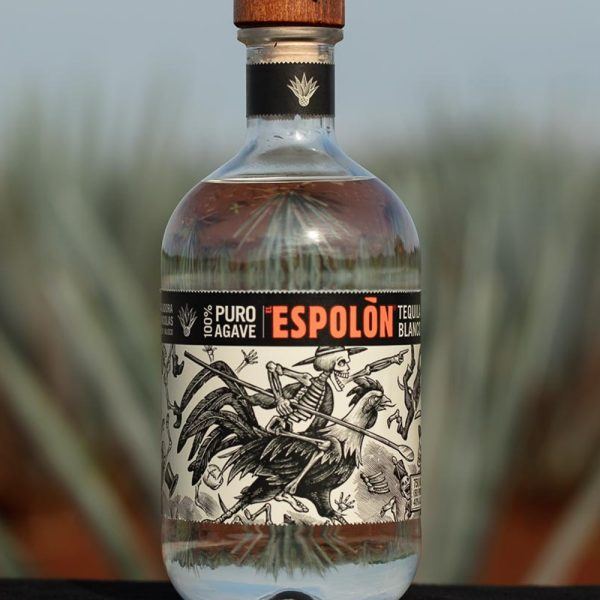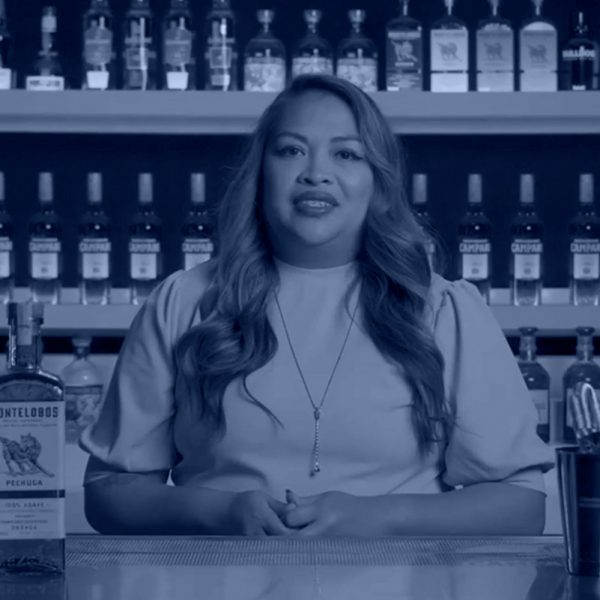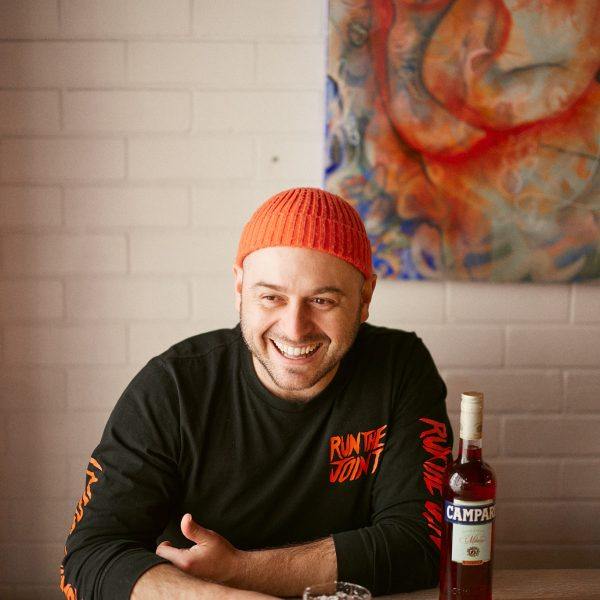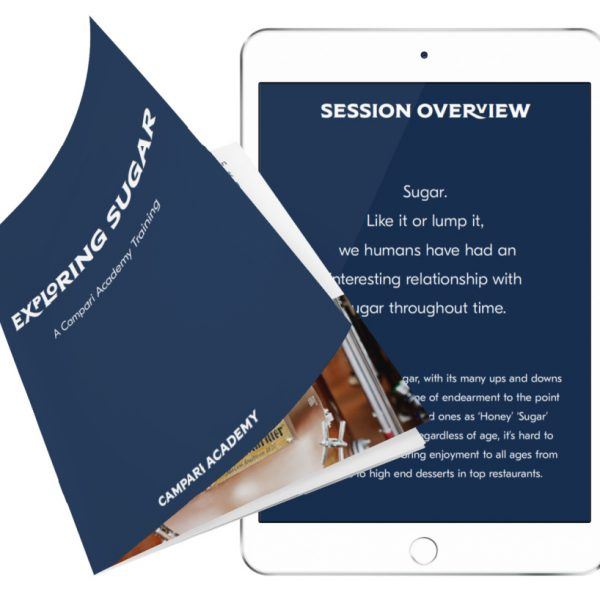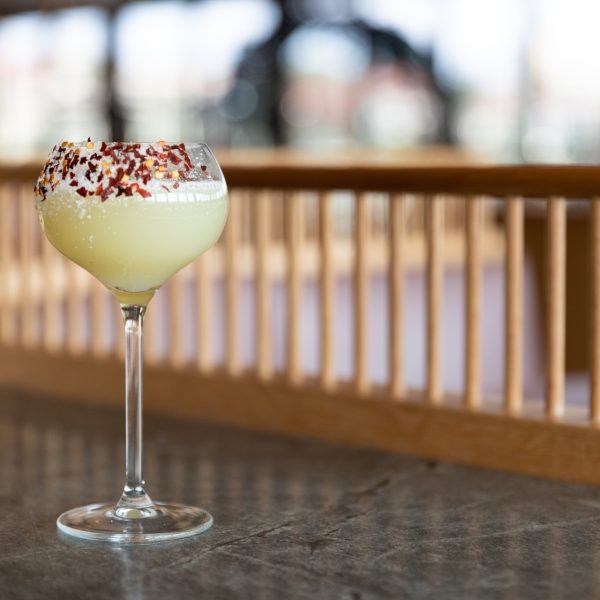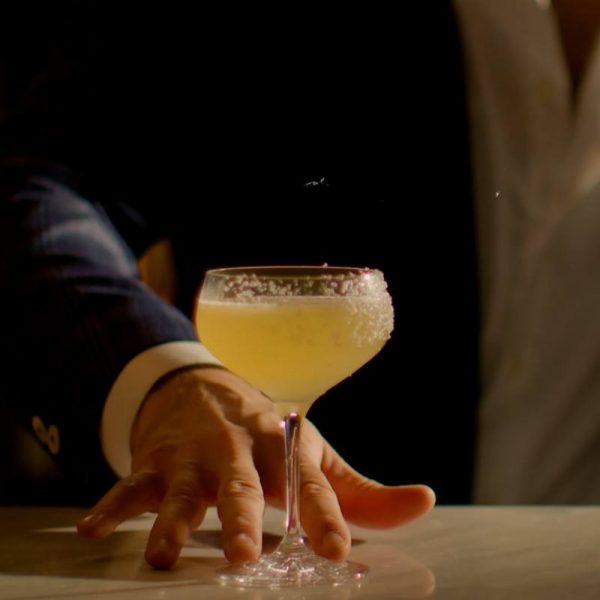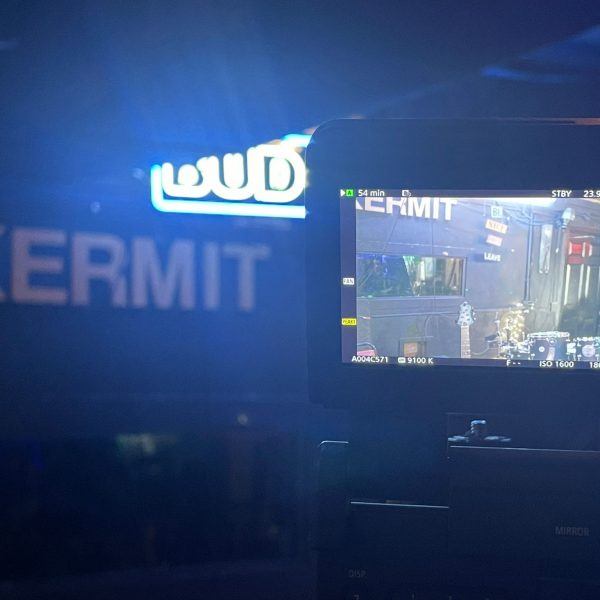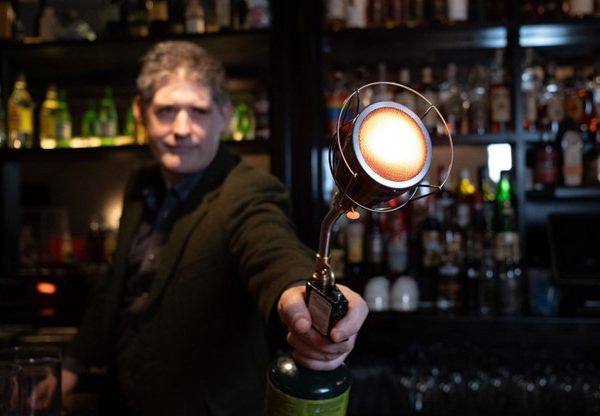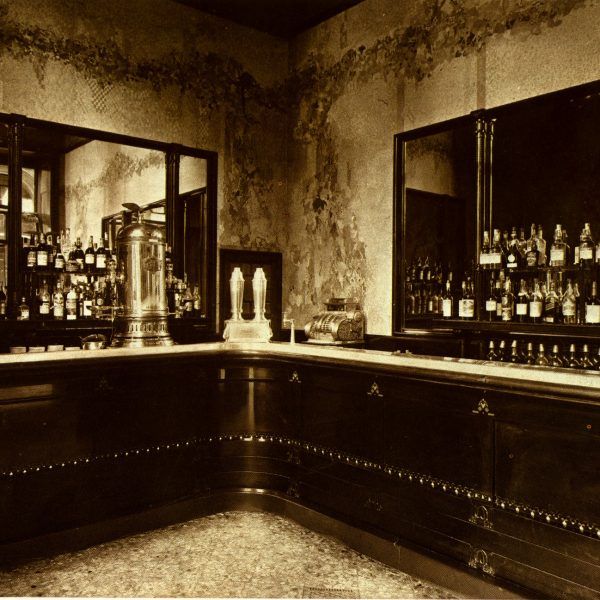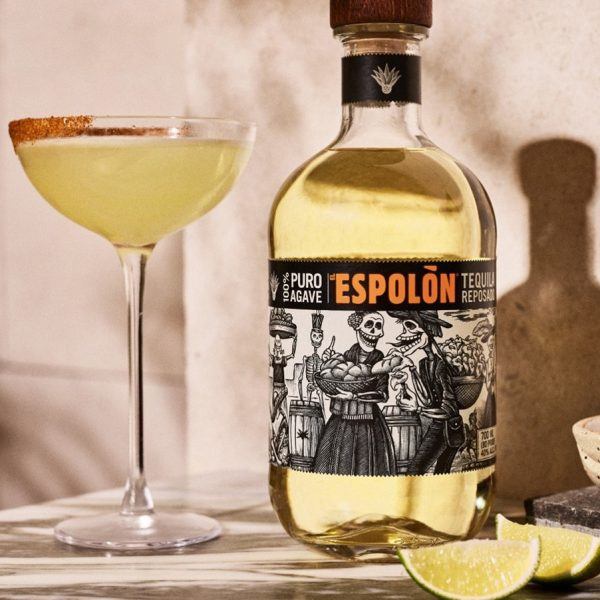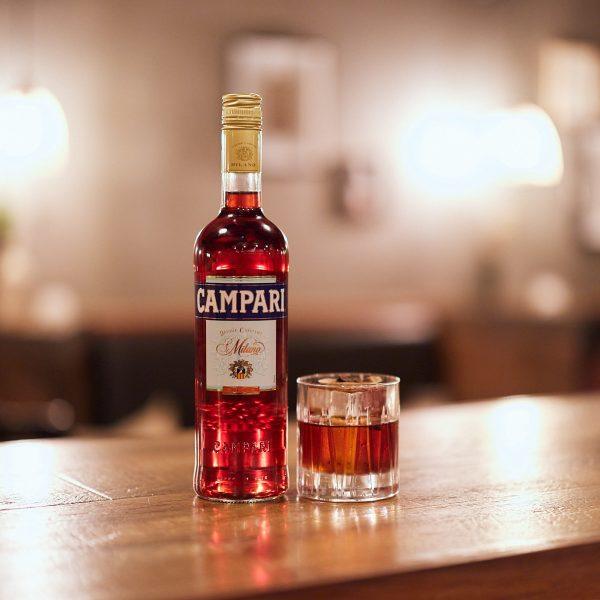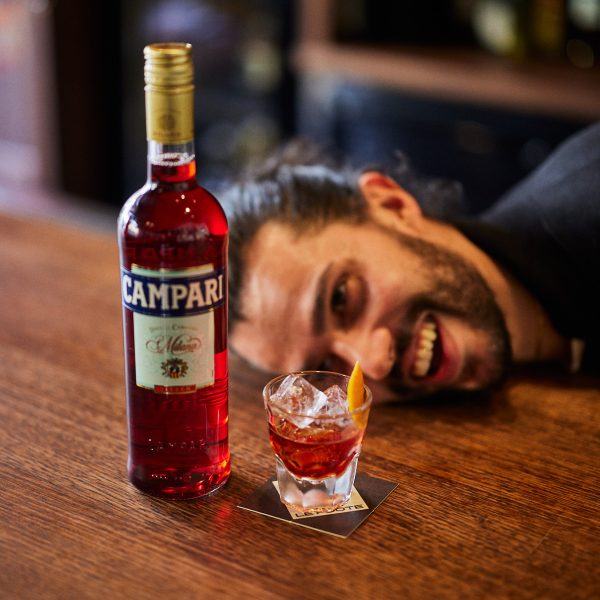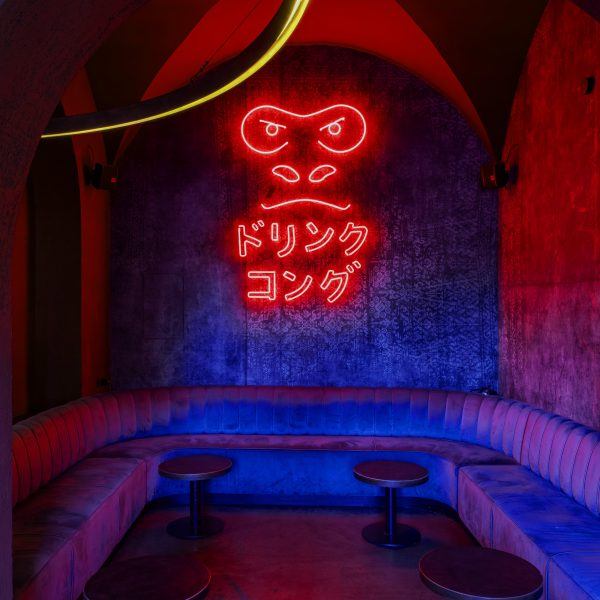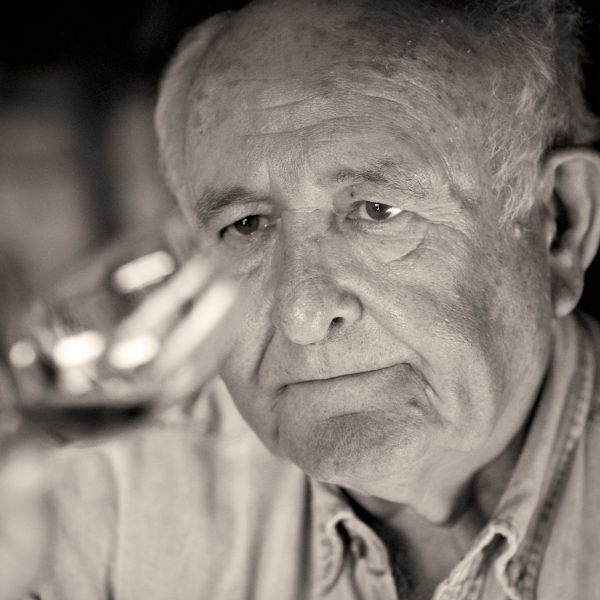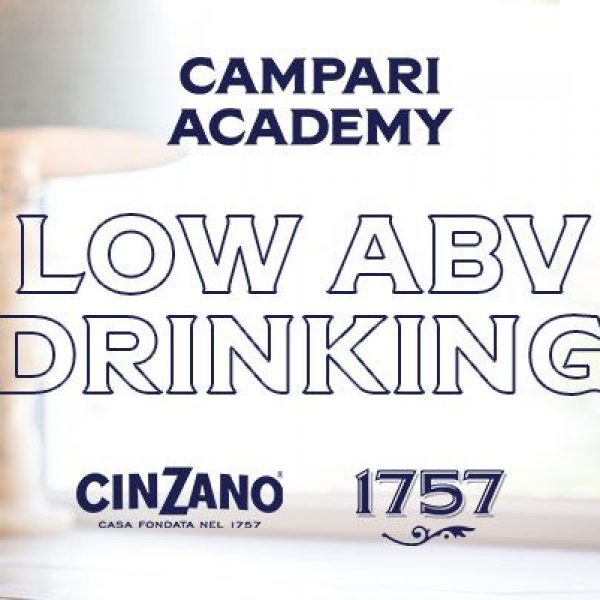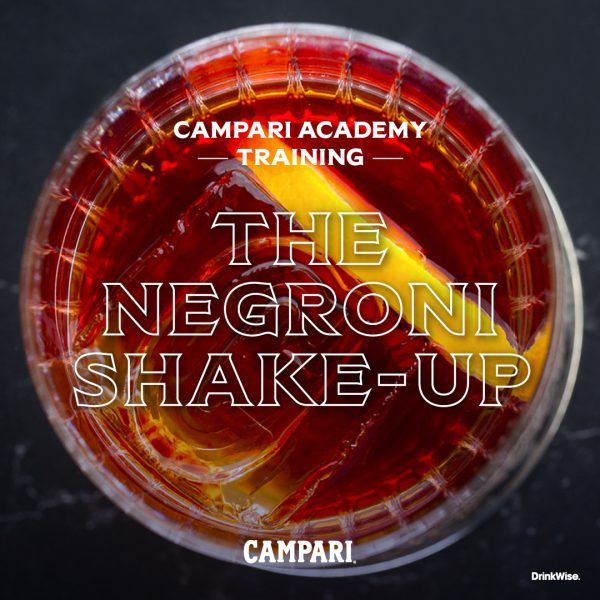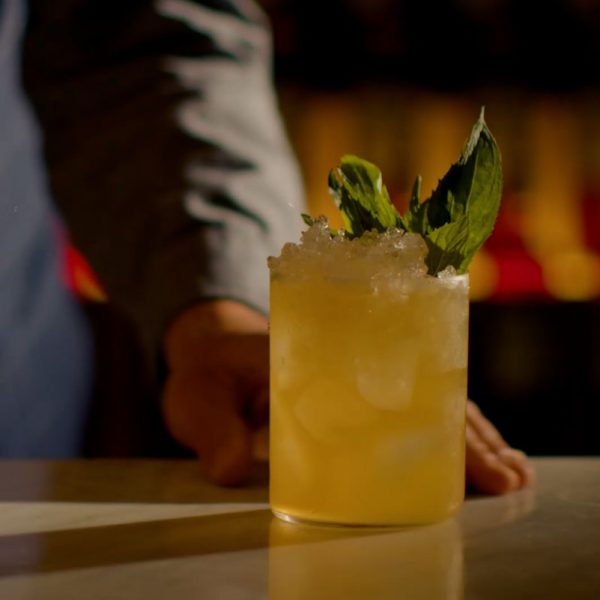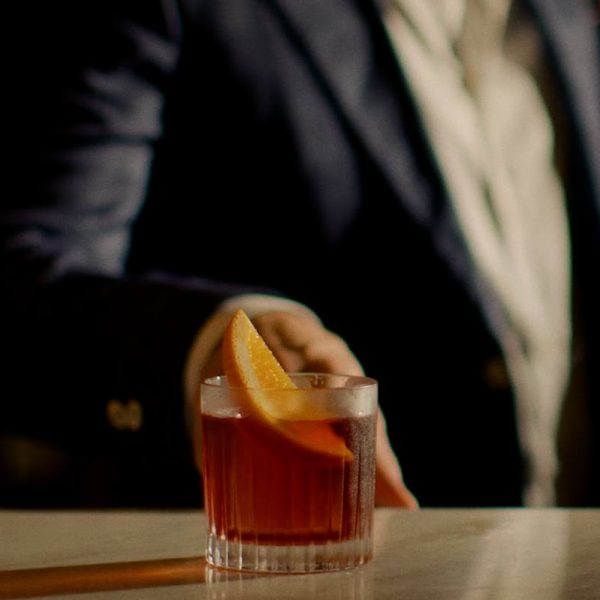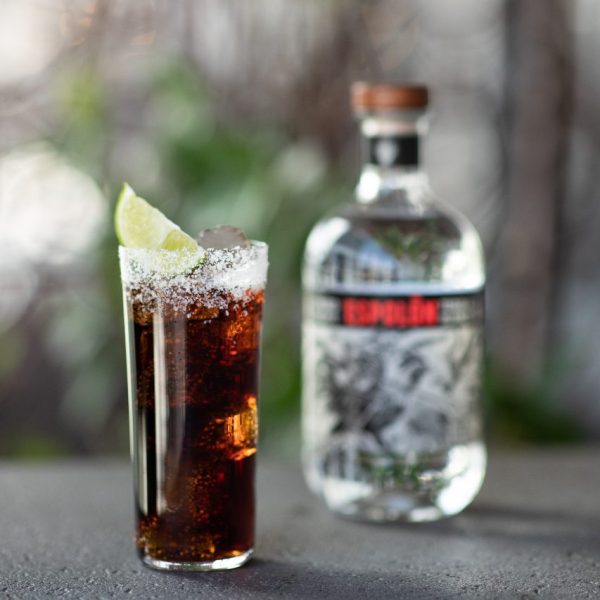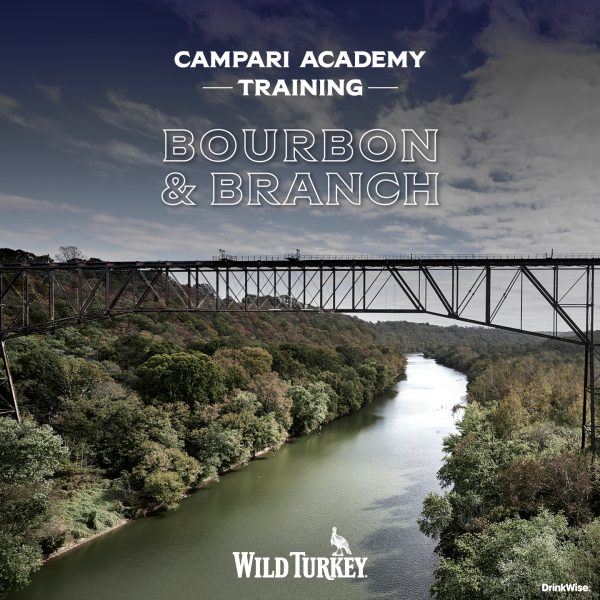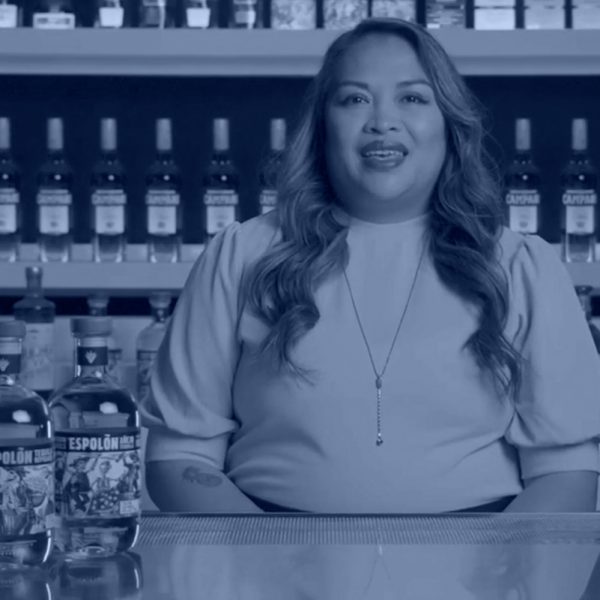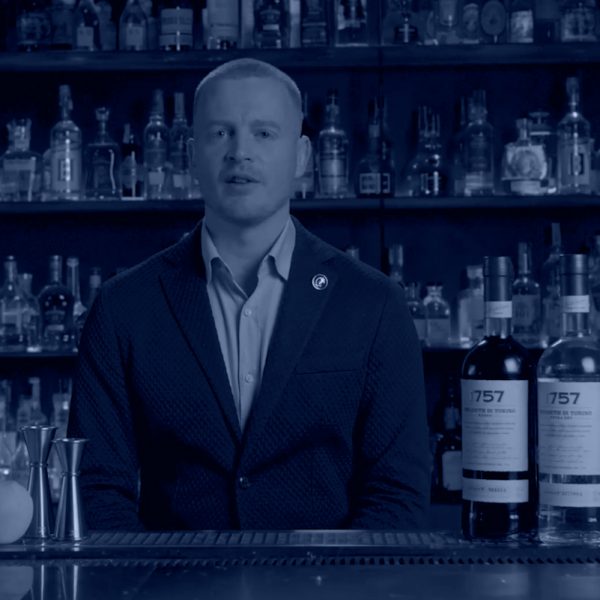SYDNEY BAR WEEK – Dave Arnold Tech Symposium Recap
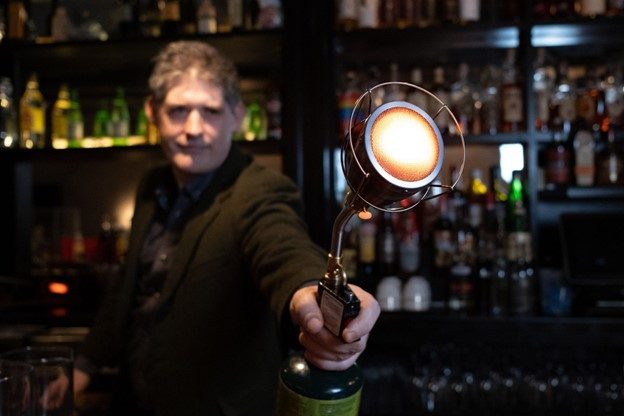
For the final Sydney Bar Week (25 years!) Campari Academy hosted a Tech Symposium for 120 of the most influential bartenders from across the nation, featuring the one and only Dave Arnold. This was Dave’s first time in Australia, celebrating the 10th anniversary of the bartender’s bible Liquid Intelligence.
For two hours Dave took us on a journey of discovery – through the world of acids, brix, polydextrose, glacid, hard water, nitro muddling, clarification (Spinzall 2.0 currently available), carbonation, and the story behind ‘Justino’ (turns out there’s a lot in a name).
Campari Academy are incredibly grateful to those of you who came to join us, and for those who we couldn’t fit in the room (believe us, we tried!!), we’ve included all Dave’s notes and anecdotes below.
Stay curious!

DEMO 1 – AVERNA & LOW ABV
When creating low-abv serves, one of the biggest issues we face is a loss of texture (body and structure) which we usually rely on alcohol and sugar to provide in our cocktails. To combat this let’s introduce you to our first two secret weapons – “Glacid” and “Poly-D”.
“Glacid” is a relatively new approach to adding body and structure to carbonated, low alcohol drinks. “Glacid” is a mix of champagne acid, water and vegetable glycerine (full recipe below). “Poly-D” aka Polydextrose is a complex carbohydrate made from glucose. When added to liquid it adds a similar texture and weight to sugar, but without the sweetness (don’t sleep on Poly-D, this ingredient is huge in the U.S.A bar scene).
For this demo Dave created a highball with Averna as the base, supported by Glacid, Poly-D, and a Celery Seed Syrup, this was then force carbonated. It comes in at 4.53% abv and 37gm/L sugar.
Usually, not adding enough soda to this kind of cocktail will create a drink that is too bitter. Too much soda and the drop in sugar/ABV will render the drink weak and watery. Glycerine is the best solution to these problems. Glacid fixes both issues simultaneously, is easy to jigger, and is shelf stable. A half-ounce (15ml) of glacid lets you make a robust eight-ounce (240 ml) drink with less than two ounces (60ml) of amaro. The large amount of seltzer added to these drinks (165-172 ml) also means they have good carbonation even if you don’t force carbonate them.
37.5mL Averna
15mL Celery Seed Syrup
15mL “Glacid”
80mL “Poly-D Hard Water”
92.5mL Filtered Water
Batch, force carbonate at 45psi, garnish with lemon twist.
500ml Glacid:
298 grams water
15 grams tartaric acid powder
17 grams 88% lactic acid solution
252 grams food-grade vegetable glycerin
Combine, dissolve.
400ml Celery Seed Syrup:
250 grams granulated sugar
275 grams water
12.5 grams celery seeds
Simmer for two minutes. Cool. Strain.
1000mL Poly-D Hard Water:
110 grams polydextrose
890 grams room temp water
Blend
DEMO 2 – WILD TURKEY 101 JUSTINO
The “Justino” (pronounced whoo-stee-no) method creates a clear spirit by blending liquor with fruit, vegetables, or spices, adding the enzyme Pectinex Ultra SP-L (our third secret weapon), and spinning the mix in a centrifuge. Pectinex breaks down fruit structure, allowing for clarification in alcohol, which many enzymes can’t do. Clarified fruit juice adds sugar, acidity, and bitterness, familiar cocktail elements. We’re using Wild Turkey 101 Bourbon with Northern Territory KP Mangos (for acidity) and dried mango (for sweetness).
The Justino was born when Dave wanted a banana cocktail without the thickness of a smoothie. Blending bananas with booze and centrifuging them yielded a clear rum with pure banana flavor. The name stuck after a reporter asked him what to call it, and make sure you ask him about it next time you see him.
750mL Wild Turkey 101
220gm Fresh KP Mango
107gm Dried Mango
3mL Pectinex SP-L
Blend for 20 minutes. Centrifuge in Spinzall 2.0
Once you’ve spun your Justino it’s time to check your sugar and acid, and it often benefits from a dash or two of 20% saline solution. Most Justino’s need a twist (lemon, orange, grapefruit) to seal the deal.
DEMO 3 – ESPOLON BLANCO NITRO MUDDLING
Traditional muddling crushes ingredients to release fresh flavors but also activates polyphenol oxidases (PPOs), enzymes that cause herbs like mint to turn brown and taste muddy.
PPOs have two enemies: alcohol and vitamin C (Ascorbic Acid). Liquor (40% alcohol) disables PPOs, while citrus juice slows them down. However, regular muddling isn’t enough—PPOs act before alcohol reaches the leaves.
Our fourth secret weapon is liquid nitrogen. Liquid nitrogen freezes herbs super quick, stopping PPOs and making our herbs brittle, allowing us to powderise them by muddling. After nitro-muddling, we thaw them in liquor to keep the herbs green. We then finish with citrus juice to neutralize PPOs completely.
60mL Espolon Blanco
22.5mL Fresh Lime
18mL Orange Syrup
7gm Parsley
2gm Lemon Myrtle
Add herbs to toby tin with enough liquid nitrogen to freeze. Thoroughly muddle so herbs are fully pulverised. Add tequila first, then remaining ingredients. Shake with one large block, and three small cubes, then fine strain into a chilled coupe.
Orange Syrup:
100gm Navel Orange Juice
78gm Sugar (Assuming OJ is 11 Brix)
Stir
Dave’s nitro-charged pointers:
- Don’t hold the bottom of the tin while muddling
- Herbs must be frozen – use the right amount of liquid nitrogen
- Thoroughly pulverize the herbs
- Add booze first to begin thawing
- Shake on a large cube
- Don’t forget to fine strain out all the fine herbs (and wash your tins really well!!)
- Don’t put nitro in a tin and seal it (you’ll end up with a bomb iykyk)
A huge thankyou to our helpers on the day, who had no idea what they were signing up for. We couldn’t have done it without you:
- Joey Tai
- Kelvin Low
- Elisabetta Luppi
- Kayla Saito
- Jack Somers
- Omar Alvarez
- Seb Borja
- Eoin Kenney
See you at the next Campari Academy!!



